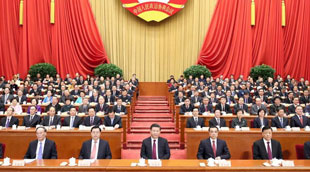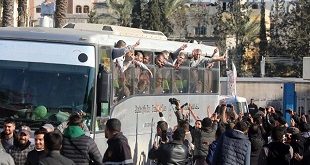
By John Njoroge
On December 27, 2007 Kenyans went to the polls to elect their president and Members of Parliament in what would turn out to be the most controversial elections in the country ever. Between Friday December 28 and the morning of Saturday December 29, the Orange Democratic Movement (ODM) presidential candidate Raila Odinga had a 500,000 vote clear lead. By Saturday evening, the tide had changed rather miraculously.
The International media began receiving reports that the votes were being held back for an unknown reason. By the time the Electoral Commission of Kenya (ECK) resumed releasing the results, a fracas between incumbent President Kibaki and Raila Odinga’s agents ensued.

The main tally centre, the Kenyatta International Conference Centre (KICC) became a war zone.
Come Sunday December 30, the results of 48 of the 210 constituencies being read by the ECK were computer print-outs without formal papers signed by polling agents and electoral officers as required by law. An electoral commission official, Kipkemoi Kirui, informed the press that election results were being manipulated. Other commission officials had abandoned their work stations in frustration. Some of President Kibaki’s votes were more than those announced in the constituencies by over 100% while in other pro-Kibaki areas, voter turn-out was registered as 115%.
The ECK chairman Samuel Kivuitu, under heavy police guards, was subsequently forced to announce that President Kibaki had won the election. ODM held a press conference where they declared their candidate Raila winner. Kivuitu was whisked to State House Nairobi where he presented a winners certificate to Kibaki who was then sworn in swiftly with only the state broadcaster KBC covering the event. Other media house both local and international had been kicked out of the KICC grounds.
 |
Sporadic riots broke out in various parts of Kenya with Eastern Kenya and Nyanza province leading in deaths. Within a matter of days, movement within Kenya was paralyzed. The port of Mombasa was closed yet goods continued to arrive via the sea. The violence which lasted over two months saw at least 1,000 people killed and another 600,000 displaced and countless homes destroyed. The killings took an ethnic and political twinge, with the Kikuyu, Luo and Kalenjin being the main protagonists and culprits.
In the weeks that the crisis raged, Kenya’s western neighbour Uganda was affected not just by the 100,000 refugees it had to host, but also by the debilitating fuel crisis that paralysed the country.
 The Independent Uganda: You get the Truth we Pay the Price
The Independent Uganda: You get the Truth we Pay the Price


